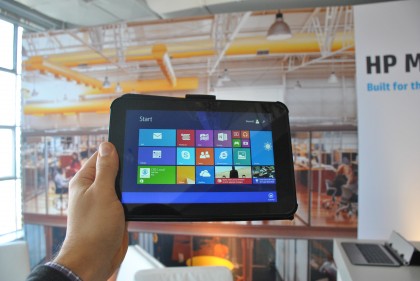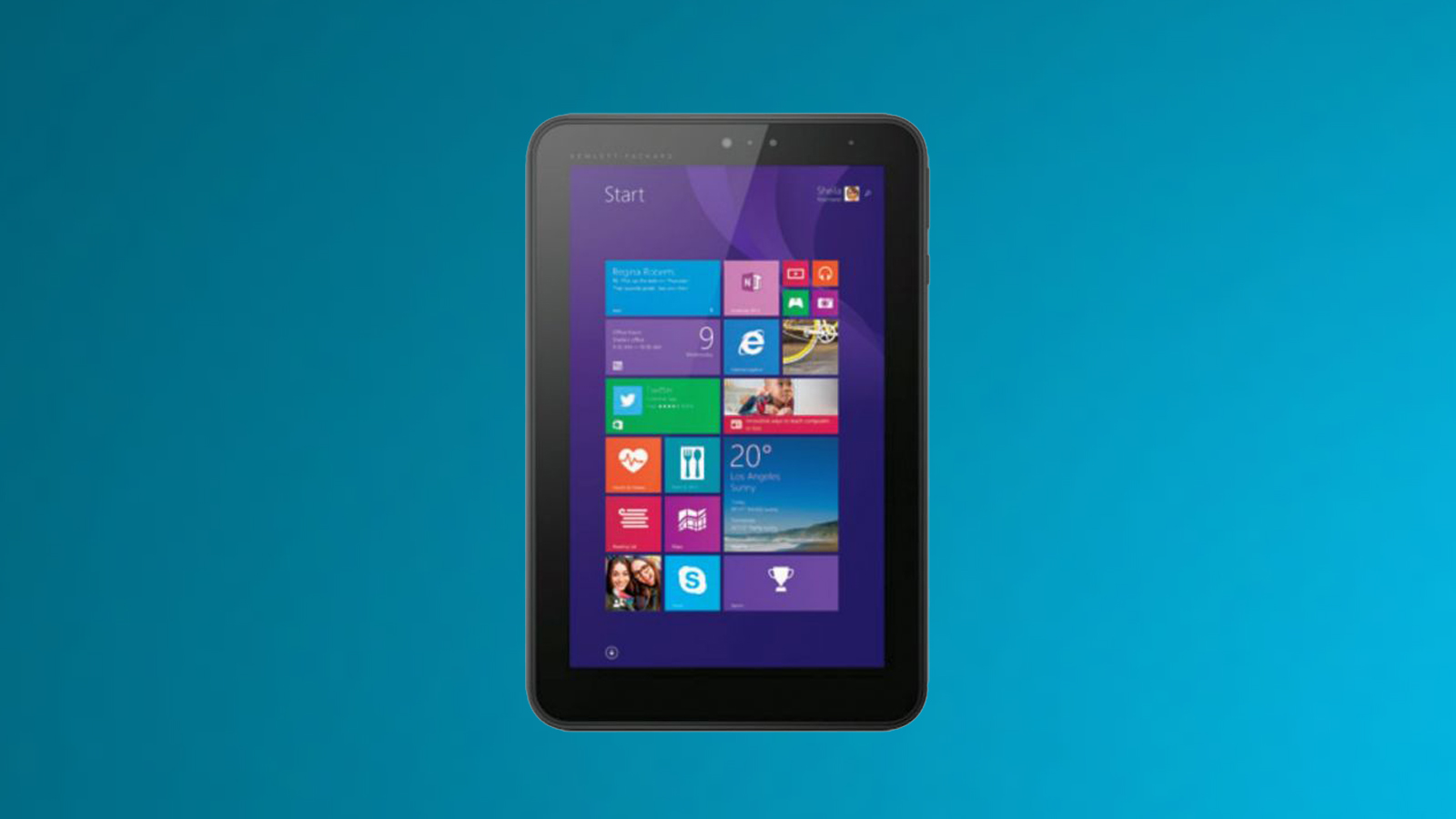Early Verdict
If you like style and portability, this tablet might be right for you. Just don't expect it to outperform others on the market.
Pros
- +
Weight
- +
Thinness
- +
Price
Cons
- -
Lightbleed
- -
Fingerprints and dust
- -
Low resolution screen
Why you can trust TechRadar
HP's new lineup of enterprise tablets and convertibles is led by the HP Pro Slate 12 ($529, £349, or AUS$646), a large format tablet that can turn physical pen-to-paper drawings into digital files.
Well below the Pro Slate 12 is the HP Pro Tab 10 EE ($279, £184, AUS$340), a 10.10-inch tablet geared toward the education market.
Although neither of these devices will compete with enterprise-focused tablets like the Dell Venue 11 Pro 7140 (starting at $699, £430, AU$795), and the Samsung Galaxy Tab Pro (starting at $545, £549, AU$995), they're both solid units that are capable of performing as advertised.
The same can be said about the HP Pro Tablet 408 G1 ($299, £178, AU$319) an 8-inch enterprise tablet that looks and feels more like an e-reader or a large smartphone than any of the aforementioned devices.
Design and specs
The first thing you'll notice about the 408 G1 is how small and light it is. At just 8.4 inches tall, 5.5 inches wide and a whopping 0.35 inches thick, this is one of the thinnest tablets on the market. The Dell Venue 8 7840 is the slimmest tablet on the market at 0.23 inches, which means the 408 G1 is only 0.13 inches thick - a barely recognizable difference.
The Samsung Galaxy Tab S 8.4 is the lightest tablet on the market at just 0.65 pounds. Although the 408 G1 isn't quite that slim, it barely tips the scale at 0.82 pounds.

The Pro Tablet 408 G1 features a 1280x800 pixel screen that displays vibrant colors. Unfortunately, like the rest of HP's new lineup, the 408 G1 suffers from extreme lightbleed and won't do you much good if you're reading or watching a movie with the sun at your back.
Sign up to the TechRadar Pro newsletter to get all the top news, opinion, features and guidance your business needs to succeed!
Cosmetics aside, underneath the hood, the 408 G1 features a quad-core Intel Atom Z3736F Bay Trail processor, 2GB of RAM, 32GB of onboard storage, a card slot, a micro HDMI output and a micro USB port.
It's got an excellent rear-facing 8 megapixel high-definition autofocus camera and a 2 MP HD front-facing camera. You don't typically want to base your tablet-buying decisions on the built-in cameras; however, because the 408 G1 is so light, thin and small, there's no reason not to snap away if the opportunity presents itself.
Features and flaws
The Intel Atom Z series of processors isn't the fastest tablet processor available. However, unless you're planning on gaming or running complex programs, you won't notice any issues. I was able to dart and dash between programs and the internet without any lag time on this device.
I definitely wouldn't recommend it as a laptop replacement, but for businesses that need on-the-go workers who can access information quickly and prettily, this speed is perfectly suitable.

As I previously mentioned, the lightbleed on the new HP devices is a real killer. If the sun is at your back you won't be able to see anything on your screen, which is a major issue for employees who might want to use this device outdoors.
Although the charcoal grey and black bezel is pretty to look at, you'll have to continually dust and wipe this device. Fingerprints, smudges and dust collect in a matter of minutes on the 408 G1.
Because this device is so narrow, it's difficult to use the keypad when it's in portrait mode. There are two reasons why: 1) The keyboard is dynamic, meaning it flips and re-adjusts itself whenever you rotate the device. So the large and wide keyboard you were using in landscape mode turns into a tiny, jumbled mess when you rotate the device to portrait. 2) Unless you're holding the device one-handed and tapping keys with your free hand, typing will be an issue. Picture yourself using both hands to type on your iPhone 5S in portrait mode. Not bad, right? Now expand the device a few inches and keep your hands in the same position. it gets a little clumsy. This shouldn't be a dealbreaker. However, don't expect to type your thesis in portrait mode (unless you enjoy carpal tunnel symptoms).
Early verdict
This isn't the most dynamic device. I don't suggest anyone but it with the intention of using it as a laptop replacement. However, it does everything a tablet should do, and it looks and feels great. No, you won't get the most vibrant screen, and it isn't the lightest and thinnest tablet on the market, but it's pretty damn light and it's pretty damn thin. For such an excellent price, you'd be wise to give this device a look.
What is a hands on review?
Hands on reviews' are a journalist's first impressions of a piece of kit based on spending some time with it. It may be just a few moments, or a few hours. The important thing is we have been able to play with it ourselves and can give you some sense of what it's like to use, even if it's only an embryonic view. For more information, see TechRadar's Reviews Guarantee.
